
With record warm weather settling over the Chesapeake earlier this week, the temptation to get out on the water is great, but it’s important to keep in mind that water temperatures remain dangerously cool. You still want to be dressed for winter.
My previous post about cold weather apparel for sailing neglected to mention one of the more interesting ways that some offshore sailors, particularly racing sailors and delivery skippers, deal with the cold and wet. Foul weather gear remains the primary means that sailors rely on to stay dry and warm, but our field testers are becoming more and more impressed by the advantages of dry suits-those stretchy, sealed, often breathable suits worn by surfers, kite boarders, and that twisted breed of winter sailors known as frostbiters. The topic of drysuits came up again, recently, as out report “Sailing Clothes for Cold Weather” took a broad look at cold-weather apparel for sailors. In that report, dry suits again were highly rated.
We’ve done a couple reports on dry suits: one a full blown comparison between wetsuits and drysuits from various manufacturers (accessible to subscribers); and two single-product reports on suits from Ocean Rodeo, one called the Soul, which we reviewed in 2012, and another called the Ignite, which we tested in late 2014.
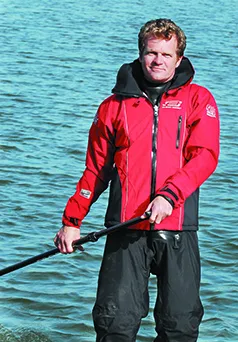
One of the key advantages that a dry suit has over foul-weather gear, is that in extreme conditions that you find in the higher latitudes-especially fall through spring-a drysuit will stave off hypothermia, increasing your odds for survival in case you or your boat go over.
The potential benefits of a drysuit were highlighted in the recent Cheeki Rafiki tragedy, in which all four crew members aboard a Beneteau First were lost at sea when the boat lost its keel and capsized. Post-accident reports suggested that one or more of the crew might have survived long enough for a rescue if they had better protection from the cold. Although an EPIRB or personal locator beacon (PLB) can direct rescuers to persons in the water, even in horrific weather, such efforts are in vain if the victims can’t maintain a safe body temperature. For decades, cold-water sailors and fisherman have kept survival suits on board, but these relatively bulky neoprene suits, which we tested in 2007, make it difficult to carry out the basic actions required to operate a boat, so they are seldom donned, except in dire circumstances. And those sailors who have enough time to don a survival suit suddenly find their mobility sharply reduced, both on the boat and in the water-as was the case with the survivors of the Bounty.
The problem with survival suits is that there’s no telling when the big wave or brutal wind gust will hit, and there might not be time to don a survival suit. Some survival suits have sewn-in gloves that make it almost impossible to turn on the radio or deploy a personal locator beacon. That’s why wearing a comfortable, breathable drysuit makes sense. It leaves you much more ready to manage the boat in heavy weather. And should the unexpected happen, your odds of survival in the water are better than they would be in foul weather gear. The nice thing is that if the situation calls for a survival suit, you can still don a survival suit while wearing your drysuit.
What do you think? If you were crossing the North Atlantic next week, would you be looking at a survival suit, drysuit, both-or none of the above? If you have had experience with either a drysuit or a survival suit, Id be interested in hearing your comments, either below or by email at [email protected].
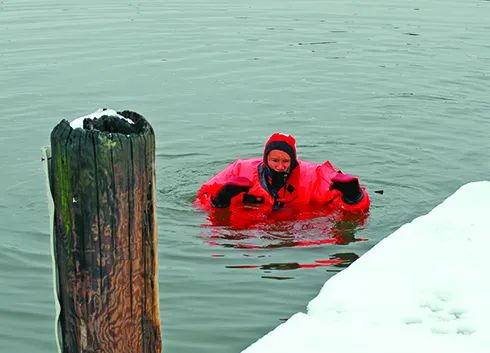


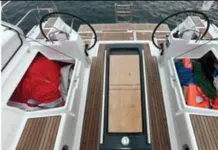
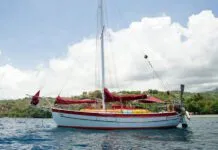

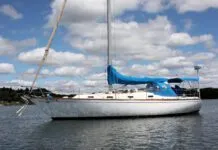
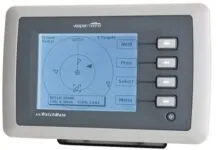
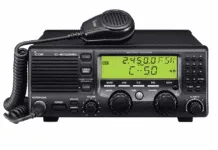


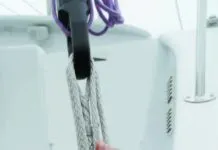


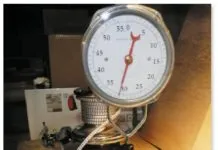
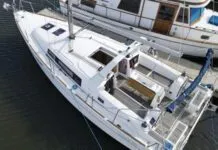
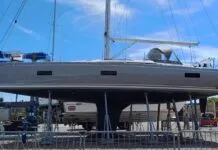



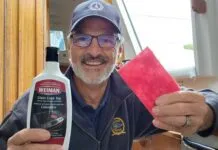








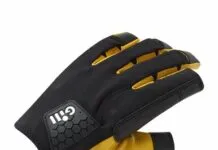
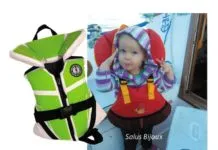




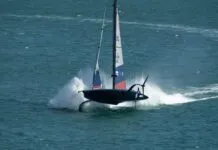




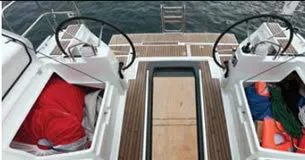
Having sailed offshore in some pretty serious conditions, there are three things that are non-negotiable for me:
1) Merino wool everything
2) A Tether and Jacklines
3) And last but not least, a really high quality Gore-tex drysuit
Not only are today’s breathable fabric drysuits safer than the traditional salopettes and top, they are also less bulky and more comfortable.
it’s a time-consuming wrestling match to put on a survival suit, especially if you don’t have help or room to work with. And then you can barely do anything. You have no mobility and can’t use your hands for anything or even hear anything.
I have a dry suit by kolkat. It goes on in place of foul weather gear. Ive been in the cold PNW waters in my youth (~17) when my ElToro submarined, it took ~10 minutes to be plucked out. I have never been so cold It took all I had to climb the ladder into the boat.
Since I mostly solo sail, I’m not going to get much help getting out of the water, and a dry suit will keeep me alive and semi-functional till either help arrives or I can get myself out.
I wear a drysuit spring and late fall on the Great Lakes. One of the most dangerous times for cold water sailing is on those beautiful sunny warm spring days when a t-shirt and shorts are a temptation but if you end up in the water you will die if not rescued quickly. I have a drysuit mainly for whitewater paddling which reqiures great protection, durability and mobility which are also great gear characteristics for sailing. Make sure to also check out kayaking outlets for a great variety of high quality drysuits that will serve you well when sailing. I have had both Kokata and Stohlquist drysuits over the last 25years and just started using my 3rd drysuit this year. Two bits of advise: 1. Buy a drysuit with a pee zipper(male) and a bottom zipper(female) and which makes it much easier to releive yourself with out having to clamber out of the suit at the last moment or try to set a new biological record for bladder capacity. 2. Get a drysuit with a front entry zipper. Avoid back entry zippers, unless you are double jointed and have arms that hang to your knees. I can’t tell you how many buddies have had to ask me to “do up” and “undo” their back entry drysuits. The guys that have no pee zipper and a back entry zipper are hilarious to watch as they dance around trying to get out of their drysuit as their bladders reach maximum capacity;) Most are made of breathable material now.
When I kept a boat at 60°N [south-central Alaska] in the late 1980s and 90s, I wore a Kokatat kayaking Goretex dry suit when sailing in cold and inclement weather.
These days the furthest S we get is typically 56°N [in southeast Alaska]. We still have Kokatat drysuits and wear them when we go sea kayaking. [They are the most comfortable when paddling any distance…]
But on the boat, we much prefer the Ocean Rodeo dual function dry suit concept where one suit can be worn as either foul weather gear [i.e., cooler via improved ventilation] or as a true dry suit. [And we have a second helm in a warm pilothouse to retreat to…]
We chose the Ocean Rodeo ‘Boss’ drysuit model for the design, comfort, durability, large cargo pockets, comfortable and adjustable neck seal [as on all OR products], oral inflation/deflation, and several other unique features. [We are just customers sharing our choices and experiences…]
https://oceanrodeo.com/product/boss/
For us, a good quality breathable dry suit worn with a heavy weight fleece unisuit undergarment [and other winter undergarments as needed for conditions] is as good as [or perhaps even better than?] the ‘Gumby’ survival suits we used to keep onboard for emergencies. [Subjective comparison; I’ve used both more than once in cold water survival training. Gumby suits make it difficult for me to easily/safely walk around and do things on a boat— especially when rushed like during an emergency situation…]
The bottom line is either one will improve your odds of surviving an emersion situation, but only one can be worn full time and still allow you to perform effectively in most situations…
Bill on SV Denali Rose
I noticed instructirs at my survival at sea course wearing dry suits for training and this (along with survival suit experimentation) influenced me to purchased an Ocean Rodeo Ignite prior to my first long distance (400 NM) ocean race in 2015. I have two survival suits. I practiced with the survival suit but it took me at least three minutes to don it in flat water. It would have been chaotic in heavy weather. I put my dry suit on at my leisure when I want foul weather protection and wore it for the first several days of the 16 and 18 Singlehanded Transpac from SF to Kauai. I put on my gear before the start and wore it consistently (slept in it a couple of nights) until I got my southing in to a little warmer weather and out of gale alley. So had a couple of opportunites to ponder the suit’s performance. Of course the dry siuit has the advantage of being a potential lifesaver in the event you go overboard. But there are caveats
First, you had better have a beacon on your person. I have my waterproof ACR mini tethered to a carrying case which is permanently attached to my PFD webbing. The alternative is to spend more time watching your boat sail away under AP. I would say this if you are a singlehander or not.
Second, The Ignite allows the user to unzip the neck seal, roll it down and stow it under the zippered jacket element of the suit. This turns the suit into a fantastic bit of foul weather gear. But, if you go in the water this way you run the risk of the waterproof suit turning into a water filled death trap. The suit is waterproof. if the top is open, guess what, it fills with water and acts like a sea anchor when it comes to getting back aboard or being rescued. There is an elastic belt included which , when cinched up, is supposed to protect the lower part of the suit from water intrusion… I dont trust it. Inshore I would typically configure as foul weather gear but when things piped up and/or I got offshore, I would don the protective neck seal and lock it down. Unlike a survival suit, you don’t have that plethora of neoprene flotation around you. I did test the Ignite in the water. It worked well but I was imagining what would have happened has I not had the neck seal on. Not good.
On the positive side the suit allows you to wear warm , dry clothing under it . Layers can be adjusted as necessary albiet the suit has to come off to change clothing below the belt. It is also pretty comfortable except fo the neck seal which can be annoying at times. The ability to convert to a more traditional foul weather jacket without the neck seal is a huge plus if it is managed carefully.
The Ignite has a horizontal zip at crotch level to allow you to take a pee. This works OK with the typical clown act and foul language associated with trying to get your business through four layers of tight fitting garments in a pitching, rolling, wet, cold, and tiny cockpit. Women will have a more difficult time with this. I think the suit would have to mostly come off for a gal to go to the BR. I had an incident approaching San Francisco on the return trip. After a day of being bashed around in 30 Kts of wind (dry suit on and buttoned up of course) I felt an ominous rumbling in my gut around midnight. I got below and had the bucket out and Ignite just about off (in record time I might add) when things sort of exploded. That put a bit of a damper on my triumphant rreturn after 5000 miles of ocean sailing.
And finally, whoever come up with “Ocean Rodeo” as a brand name ought to get a special award for best name ever.
I have Musto BR2 offshore foul weather gear for offshore sailing and it’s great gear. But if
you go into the water, you will be wet and cold. Two years ago in preparation for the Route
St Pierre Miquelon Race, I looked into buying either a survival suit or a dry suit as the waters
off Nova Scotia in June are still cold, in the 40s F. I wanted gear that I could routinely wear
on watch and still be effective and comfortable. I investigated and tried on survival and dry
suits. The survival suits were awkward and I couldn’t imagine being able effectively to work the
boat. Even with assistance both were difficult to don and I couldn’t imagine getting ready to stand
watch at midnight. Looking for an alternative, I discovered the Mullion Solas immersion suit. It’s a
semi-dry, anti exposure suit that takes only a minute or two to don, and has maximum flexibility and
comfort. The Solas Suit 1A provides a minimum of 1 hour thermal protection in 40F water. With
an optional thermal liner, thermal protection increases to 6 hours. This is commercial gear used
on offshore oil rigs, wind farms, fishing, etc. Although survival times may not be as longs as a
survival suit or dry suit, I am probably ten times more likely to be wearing it as it’s comfortable
and easy to do things. A plus is that the Solas 1A suit and the optional thermal liner cost me just
a bit more than $400US. I purchased mine from the Netherlands and they’re also available from
the UK. ps. I also wear a PAIS and a PLB when on deck.
I have been using a Mustang Anti-Exposure Suit for 25 years in cold weather and cold water sailing and fishing. I sail on 30 to 50 foot sail boats and fish on 21 to 30 foot fishing boats. I have worn it in the Great Lakes and in the Gulf of Mexico. I have been satisfied with its warmth and comfort. What would be the advantages of a dry suit compared to my Mustang Anti-Exposure Suit?
Nicholson’s article offers a valuable discussion of how to stay warm during offshore sailing in cold weather. However, an immersion suit (AKA a ‘gumby suit’ or as in the article ‘survival suit’) is a completely different tool than a wet suit or dry suit. This is like debating whether a hammer or a screwdriver is better for driving a nail. An immersion suit has one function only: donning immediately prior to abandoning ship, so as to extend survivability in the water. Immersion suits must comply with regulatory standards, which can be seen here: 46 CFR Subpart 160.171. No dry suit provides comparable survivability time in the water to an immersion suit, nor are dry suits subject to regulatory standards. However, no immersion suite allows the dexterity required to conduct even the simplest of tasks in operating a vessel, sail or power. A prudent sailor operating in cold waters would rightfully carry an immersion suit for each person aboard for use at time of abandoning ship. In addition, the person in charge must ensure that each person aboard has the proper gear (decidedly not an immersion suit) to stay warm and dry while on watch; here the range of options can vary considerably, depending upon the circumstances (i.e. expected weather and climatic conditions; water temperatures; distance off shore; operational demands, etc) and personal preferences.
Funny story re my Gumby suit which I carry aboard as last ditch emergency gear but never wear. I bought it and practiced at home. Got into the suit OK but could not get out. It was crazy. I am sitting in my LR alone trying to figure out how the get the darn thing off. After a half hour struggling I am thinking if I call 911 I am going to be the laughing stock of California and, really, can you imagine a guy wandering around the neighborhood in a gumby asking the neighbors for help, Eventually I managed to hook the back of the suit on something in the garage and sort of pull myself out of it.
I used an Ocean Rodeo Ignite racing from South America to South Africa. It was so much easier to get in and out of, compared to the Musto and Henry–Lloyd dry suits the other crew used, but after 2 nights of rain the dry suit became a wet suit with soaking wet Merino socks on both feet – felt like half a pint of water in each leg. This repeated after ~4hours of rain on a watch. I should have gone for the Boss.
Interesting experience. I have the Ignite also. I did not have problems with rain penetration but after several days of constant wear I began to feel like I was in a sauna. So it has it’s disadvantages for sure. I am a singlehander so the smell after a few days is tolerable. On a crewed boat one might expect to be thrown overboard when removing the suit after a few days constant wear.
A Mustang suit will be cold when you fall in and will keep you safe for several hours. The primary advantage is that it is cheaper and easier to put on. But it is less comfortable and less protective.
A dry suit will keep you warm for 12-24 hours with the right layers. I once spent 6 hours in 32F water (25F air) in a dry suit as part of a product test. My body temperature actually went up a few tenths. I was both dry and toasty warm.
As I mainly sail on northern Baltic sea, I have many times tought of this issue. I can survive maximum 15 minutes in icy water. When I make hole in the sea ice to go swim, it is only few minutes for me before going back to sauna. When I ask help with VHF, it’s anything from 15min to 1h before cost guard is there. That time I must survive. Survival suit is useless in our conditions from above mentioned reasons. I need my hands and mobility. The rule here is that you don’t leave your boat. So only use for a survival suit would be to order them on for my grew beforehand while doing the sailing myself. That is not practical at all. So dry suit is the only option. It’s hard to attend your natural needs with wet suit on. The most difficult thing is to protect kids. They grow so fast that you need new suits very often.